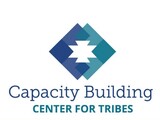|
Collaboration between state child welfare agencies and tribes is essential to ensure that the best interests of American Indian/Alaska Native (AI/AN) children and families are met. Authentic and effective collaboration is built on a foundation of trust and respect. Child welfare agencies need to acknowledge the historical trauma and inequities that continue to this day, to overcome mistrust and forge strong partnerships with tribes.1
Tribal leaders and community members are the best experts in supporting AI/AN children, young people, and families. State agencies should be open to learning from tribes, prioritizing their perspectives, and incorporating their knowledge into child welfare policy and practice. By respecting tribes as equal partners with unique cultures, values, needs, and expertise, state child welfare agencies can build more equitable child welfare systems and improve outcomes for children, young people, and families.
State and Jurisdictional Examples
-
To better meet the needs of its AI/AN children and families, the California Department of Social Services (CDSS) recently established an Office of Tribal Affairs. This office supports CDSS to address policy, practice, and partnerships with Tribes to strengthen and enhance Tribal-State relationships and improve outcomes of AI/AN children and families in the child welfare system.2
-
Minnesota’s state legislature, among others,3,4 fortified its state protections for AI/AN families in light of the recent Supreme Court challenges to the Indian Child Welfare Act (ICWA). Originally established in 1985, the Minnesota Indian Family Preservation Act now includes more specific protections for AI/AN parents and tribes and broadens certain definitions of kin.5,6
-
In the development of its Family First Support Plan, Oklahoma Human Services partnered with the Oklahoma Indian Child Welfare Association to ensure that its plan reflected the priorities and feedback of the state’s 38 federally recognized Tribes.7
Read how these states, and others, partnered with the Capacity Building Center for States (Center) to increase their capacity in the Telling Our Story series.
Dash of Data
July 2023 marks the 33rd anniversary of the Americans With Disabilities Act (ADA). State child welfare removal rates are disproportionately high for parents with disabilities. Similarly, Indigenous children are overrepresented in child welfare systems.8
According to the most recent Census data, there are approximately 3.4 million children under the age of 18 living in the U.S., and 5 percent of them have a disability. In the AI/AN population, 6 percent of children have a disability. The AI/AN population as a whole also has the highest disability rate, 15 percent, among any ethnic or racial group.9,10
The proportion of children with disabilities in the U.S. child welfare system is much larger. When looking at children with special health care needs, 14 percent of AI/AN children entering care have a disability or require special health care.11
State child welfare agencies should work with tribes to explore the root causes of this overrepresentation and work together to serve children and families in their own communities and with culturally appropriate services.
The Center has several resources to help agencies build capacity to meaningfully engage and collaborate with tribes.
Center Resources
Learning Experiences
Related Resources
Related Organizations
|

-
Capacity Building Center for Tribes – Collaborates with American Indian and Alaska Native nations to help strengthen tribal child and family systems and services in order to nurture the safety, permanency, and well-being of children, young people, and families.
-
Center for Native Child and Family Resilience – Supports and enhances resilience-related approaches to tribal child welfare by developing evidence-based standards of care.
-
National Native Children’s Trauma Center – Provides training and technical assistance in trauma-informed systems change across all tribal child-serving systems, including schools, behavioral health providers, child welfare agencies, and juvenile justice systems.
|
|